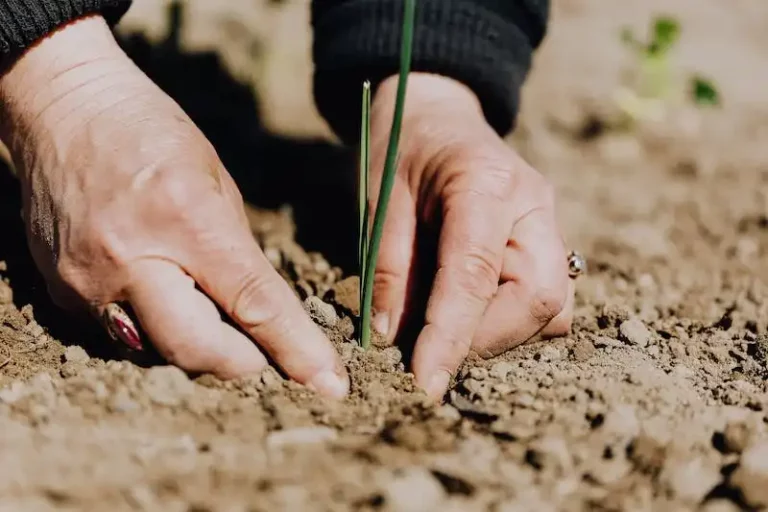The hibiscus tree is a stunning plant that adds a pop of color to any landscape. With its vibrant pink flowers, it is sure to catch your attention. Whether it’s planted in the ground or in containers, the hibiscus tree is a beautiful specimen that can be enjoyed both indoors and outdoors.
When caring for a hibiscus tree, it’s important to provide it with the right amount of sunlight and water. Hibiscus trees thrive in warm climates and can be planted in the ground or kept as an annual. They’re not limited to just pink flowers, as they come in many different colors, such as rose and even lilies. Best of all, they bloom for months at a time, providing a splash of beauty in the landscape.
If you live in a colder climate, you can still enjoy the beauty of a hibiscus tree by keeping it indoors during the colder months. It’s crucial to provide it with a well-draining and warm environment, as hibiscus trees are sensitive to colder temperatures. To keep it flowering, it’s a good idea to trim back the branches and deadhead spent blooms.
Like any plant, hibiscus trees can encounter some problems. Insects can be a common issue, so it’s important to inspect the plant regularly and take necessary steps to eliminate any pests. Fertilizing and properly caring for the hibiscus tree will also help keep it healthy and thriving.
In conclusion, the hibiscus tree is a striking plant that adds warmth and beauty to any landscape. Whether you plant it in the ground or keep it in a container, it’s sure to make a statement. With the right care and attention, you can enjoy the vibrant blooms of the hibiscus tree for many weeks at a time. So, why not consider adding a hibiscus tree to your home?
Source: The Spruce
Hibiscus
The hibiscus is a beautiful flowering plant that belongs to the mallow family. It is known for its large, showy blossoms that come in a variety of colors including red, pink, orange, yellow, and white. The hibiscus plant can grow as small shrubs or large tree-like specimens, depending on the species.
Hibiscus plants are commonly found in warmer climates and can be grown in USDA zones 9 to 11. They thrive in full sun and prefer well-drained soil. When planting hibiscus, it is important to select a spot where the plant will receive plenty of sunlight and has enough space to grow. Regular watering is essential to keep the plant healthy and flowering. Fertilizing the hibiscus plant helps to promote healthy growth and vibrant blossoms.
Pruning hibiscus plants helps to shape and maintain the desired size of the plant. The best time to prune hibiscus is in late winter or early spring, before new growth starts to emerge. Removing any dead or damaged branches and shaping the plant can rejuvenate its appearance and encourage new growth. Pruning hibiscus plants also helps to increase airflow and prevent the occurrence of diseases.
Hibiscus plants can be grown in containers and make stunning additions to patios, balconies, or any other small spaces. The plants can be pruned to maintain a smaller size and prevent them from becoming too large for the container. When growing hibiscus in containers, it is important to provide regular watering and fertilizing, as the plants have limited access to nutrients and moisture compared to those planted in the ground.
Hibiscus trees are popular ornamental plants that can be grown as focal points in gardens or as specimen plants in front yards. Their stunning blossoms and tree-like structure make them stand out in any landscape. With proper care and maintenance, hibiscus trees can live for many years and continue to add beauty to the landscape.
There are several species and varieties of hibiscus plants available, each with its own unique characteristics. From the common hibiscus to the tropical hibiscus, there is a hibiscus plant for every garden. Make sure to read the plant specifications and select the right hibiscus for your climate zone.
Whether you are a beginner or an experienced gardener, hibiscus plants are a great addition to any garden. Their striking blossoms and colors add a tropical feel to any landscape. With a little love and care, hibiscus plants will reward you with plenty of beautiful flowers year after year.
So, if you’re looking for a stunning and low-maintenance perennial that will bring color and beauty to your garden, consider planting a hibiscus. You won’t be disappointed!
Hibiscus Tree
The Hibiscus tree, also known as the Hibiscus rosa-sinensis, is a beautiful flowering tree that can add a splash of color to any garden or home. These trees are more like perennials in warmer zones and can be kept as a perennial by planting them in a well-draining soil. They are easy to care for and can be a great option for beginners who want to add some beauty to their garden.
Hibiscus trees are known for their gorgeous blooms, which come in a variety of colors. Some varieties bloom only in the late fall or early winter, while others have flowers that can last all year round. You can select from a variety of colors, ranging from vibrant reds and oranges to soft pinks and whites.
When planting a Hibiscus tree, it is important to select a location that gets plenty of sunlight. These trees like to be in the front or near a window where they can get lots of light. They also like to be kept in a well-drained soil that is slightly acidic. It is important to water them regularly, especially in the hotter months, as they don’t like to be in high temperatures and can wilt if not kept well-watered.
For fertilizing and pruning, it is best to follow the guidelines specific to your variety of Hibiscus tree. In general, a balanced fertilizer can be applied once a month during the growing season to help promote more blooms. As for pruning, it is best to prune the tree after it has finished blooming to encourage new growth.
While caring for a Hibiscus tree, there are a few common problems that may arise. Some of these include aphids, spider mites, and scale insects. These pests can be dealt with by using insecticidal soap or neem oil. Another issue to watch out for is root rot, which can occur if the tree is kept in soil that is too wet. To prevent root rot, make sure the soil is well-draining and avoid over-watering.
In conclusion, the Hibiscus tree is a beautiful specimen that can bring vibrant colors and beauty to any garden or home. These trees are relatively easy to care for and can be a great option for beginners. Whether you plant them in your garden or keep them as a potted plant, the Hibiscus tree is sure to add a touch of tropical beauty to your space.
Plant specs
The hibiscus tree, also known as the hibiscus plant or hibiscus mallow, is a tree-like shrub that grows best in warm climates. It is a popular choice for home gardens due to its large and colorful blossoms, which come in a variety of colors.
When planting a hibiscus tree, it is important to consider the plant’s requirements. Hibiscus trees need plenty of sunlight, so it is best to choose a location where they will receive at least six hours of direct sunlight daily. They also require well-drained soil and should be watered regularly, allowing the soil to dry out slightly between waterings.
In colder climates where temperatures drop below freezing, hibiscus trees can be kept in containers outdoors during the summer months and brought indoors for winter. In warmer climates, they can be planted directly in the garden.
Hibiscus trees are known for their high maintenance and require regular care and attention. Pruning is necessary to keep the plant compact and to encourage blooming. Deadheading spent blossoms also helps to prolong the blooming period.
If you have dogs, be aware that hibiscus plants can be toxic to them if ingested. It is important to keep them out of reach of pets.
One common variety of hibiscus tree is the rose of Sharon, which has smaller flowers compared to standard hibiscus plants. However, there are also larger varieties available for those looking for a showier specimen.
In addition to their beautiful blooms, hibiscus trees also attract butterflies, hummingbirds, and bees to the garden, adding even more color and life to your landscape.
If you are considering buying a hibiscus tree, it is important to read the care instructions and any comments or advice given by the seller. Different varieties may have specific care requirements, so it is best to do your research before making a purchase.
In summary, hibiscus trees are a popular choice for home gardens due to their tree-like appearance and colorful blooms. Whether planted in the ground or in containers, they require regular watering and lots of sunlight. With proper care and attention, hibiscus trees can be enjoyed for many months, adding beauty to any garden or landscape.
Plant care
To keep your hibiscus tree healthy, here are some important plant care tips:
- Choosing the right type: When buying a hibiscus tree, choose a variety that is suitable for your climate zone. Some varieties are more tolerant of colder temperatures, while others thrive in warmer zones. Make sure to check the zone recommendations before purchasing.
- Planting in well-draining soil: Hibiscus trees require soil that drains well. Prepare the planting area by adding organic matter to improve drainage.
- Watering: Water your hibiscus tree regularly, especially during hot and dry periods. Make sure not to overwater as this can lead to root rot. A good way to check if your tree needs watering is to stick your finger about an inch into the soil. If it feels dry at that depth, it’s time to water.
- Fertilizing: Hibiscus trees benefit from regular fertilizing, especially during the growing season. Use a balanced, slow-release fertilizer and follow the recommended dosage. Be careful not to over-fertilize as this can damage the plant.
- Pruning: Prune your hibiscus tree to shape and remove dead or damaged branches. Regular pruning also encourages new growth and more flowers. It is best to prune hibiscus trees in early spring before new growth begins.
- Insect and disease control: Keep an eye out for any signs of insect infestations or diseases. Hibiscus trees can be susceptible to aphids, whiteflies, and fungal diseases. Treat any problems immediately to prevent further damage.
- Limited exposure to cold: Hibiscus trees are sensitive to cold temperatures, so it’s important to protect them during the winter months. If you live in a colder climate, consider growing your hibiscus tree in a container. This allows you to bring the plant indoors or to a protected area when temperatures drop.
- Appropriate landscape use: Hibiscus trees make beautiful specimen plants or can be used to create a colorful hedge or screen in your garden. They also work well in containers, allowing you to move them around and enjoy their beauty from different parts of your landscape.
- Knowing the facts: It’s important to be aware that some hibiscus tree varieties can be poisonous if ingested. If you have pets or young children, choose non-toxic varieties or place your tree in an area where they can’t reach it.

